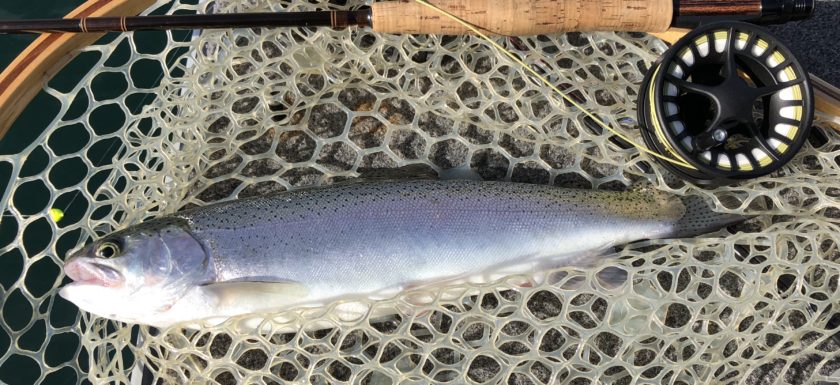
My first fly rod was a two-piece fiberglass Wonderod made by Shakespeare. It had metal ferrules, cheap tin guides, and a chipped cork handle. It was a terrible fly rod. But the only one I had.
When I first discovered it (resting on two nails hammered into the floor joists of my fathers workshop) it was wrapped in a musty cloth sock and covered in years of dust. Taking the rod out of the basement shop, I lashed it to the frame of my BMX bike with rubber bands and bread ties. My father watched as I affixed the rod to my bike seeming to enjoy the fact I had found it.
As I continued to prepare for my evening fishing trip to the Erie Canal, my Dad went down into the basement shop and came back with an old Phlueger Medalist fly reel. It was wound with a cracked Cortland fly line and a stiff and curled monofilament leader.
This off-the-shelf fly fishing stuff — Circa 1965 — had been hanging around the workshop for decades. Enjoying my ambition my Dad was happy to see it get used. But more so, he knew the stuff was antiquated junkcand had no vested interest to its future well-being.
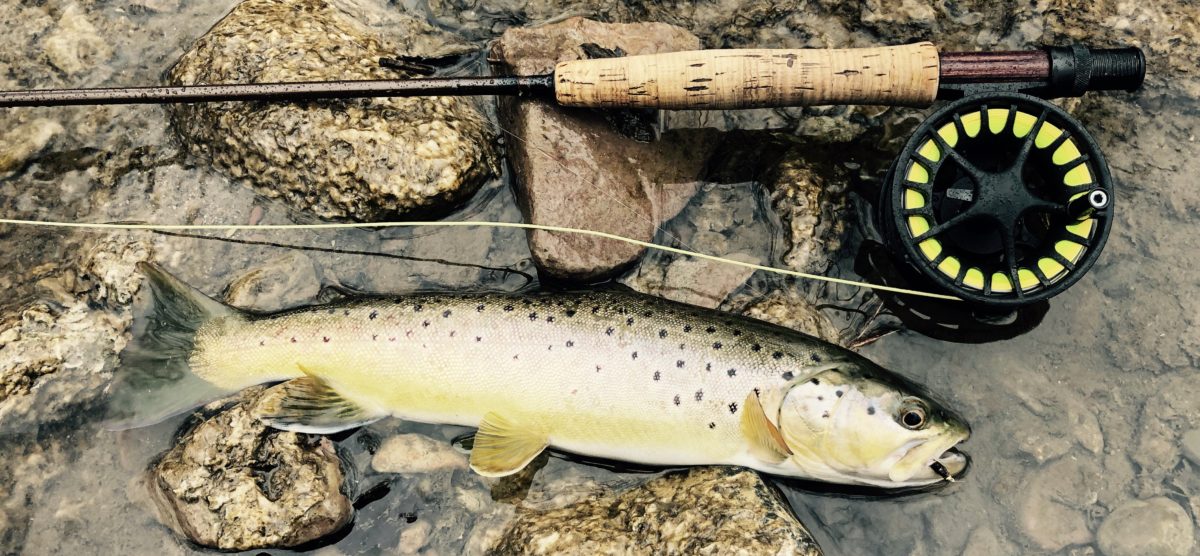
Many bluegills in the the Erie Canal felt the wrath of that Wonderod. Flies bought at the village hardware store worked great.
The yarn ant patterns that came in a two-pack for 75 cents were killer! Rigged with a yarn ant or a red piece of handkerchief on a cheap Eagle Claw hook — was great at catching panfish, bass, and bull frogs.
It is hard to believe that the Wonderod was at one time considered high-tech in fly fishing. What I could see then — and still see now — is that Fiberglass makes mediocre fly rods.
In my shop is an old army trunk my grandfather dragged around the world for his Uncle Sam back in the 40’s. The trunk is now full of Outdoor Life, Field and Stream, and other sporting magazines from the 70’s, 80’s, and 90’s. It is a fine collection of outdoor writer bullshit from decades past.
Somewhere, in those glossy old pages, I guessed, somebody wrote a piece about the demise of fiberglass and the entry of high modulus graphite into the world of fly rods. Digging through the piles and flipping through the pages of this library of outdoor propaganda revealed no clues.
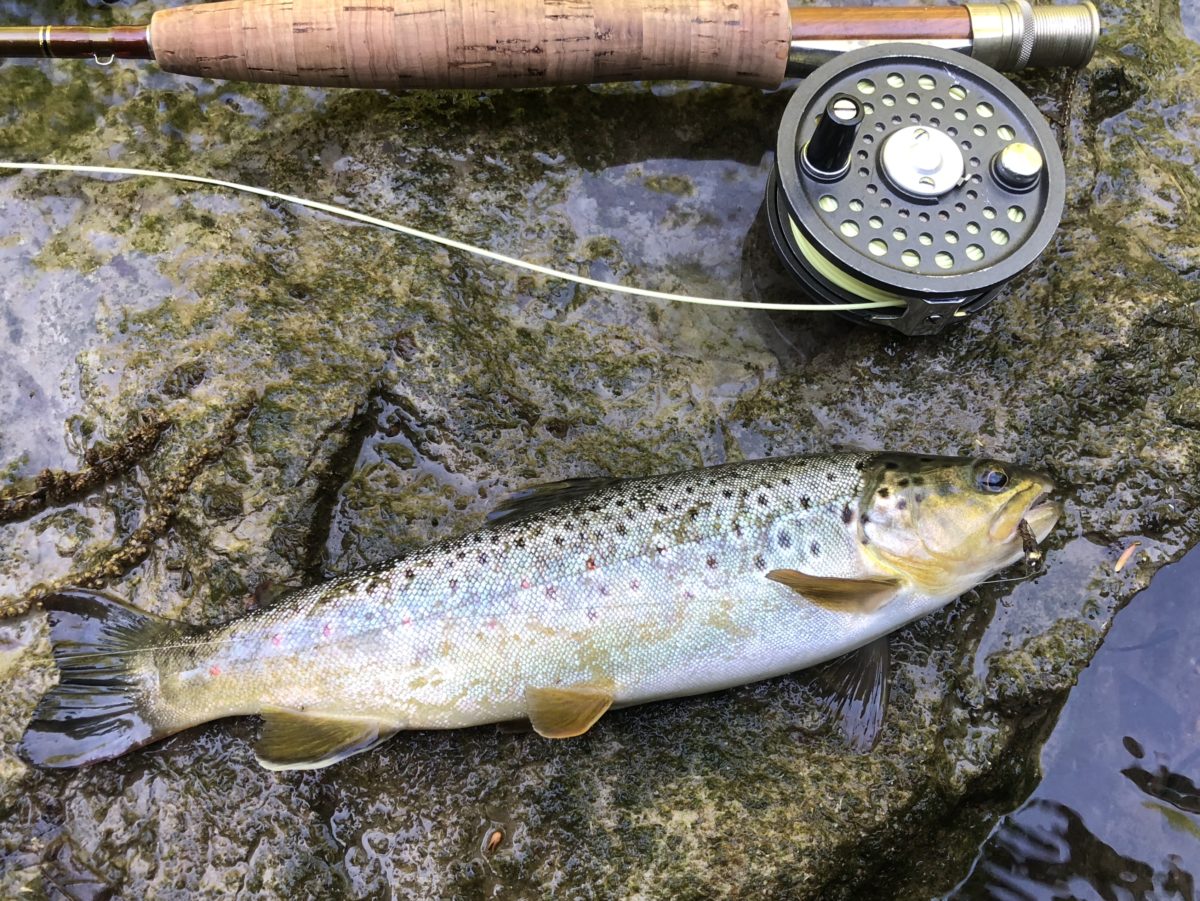
Fiberglass lacks the characteristics that makes a good fly. It is too flexible and heavy. Lacks inherent power. Is too limber to be accurate. Some fly fishers say that the limber attribute of glass rods gives the rod character of the kind high-modulus graphite rods lack. Referring to fast-acrtion modern fly rods as “lifeless”.
Through decades of fly fishing and guiding I never considered a fiberglass rod a useful fly fishing tool. Fly rod manufacturers departed from fiberglass a long time ago.
When I think of fiberglass fly rods I think of canoes. Canoes are a favorite animal of mine. Fly rods second only to the canoe. As a simple watercraft that is efficient, light, dexterous, seaworthy, and tough…A well-made backcountry canoe is a very sexy creature.
Attractive by nature, the ultra-light carbon fiber and kevlar Adirondack backcountry-style canoes always catch my eye. Most of them I see without a scratch, lashed to the top of late model Subarus with out-of-state plates.
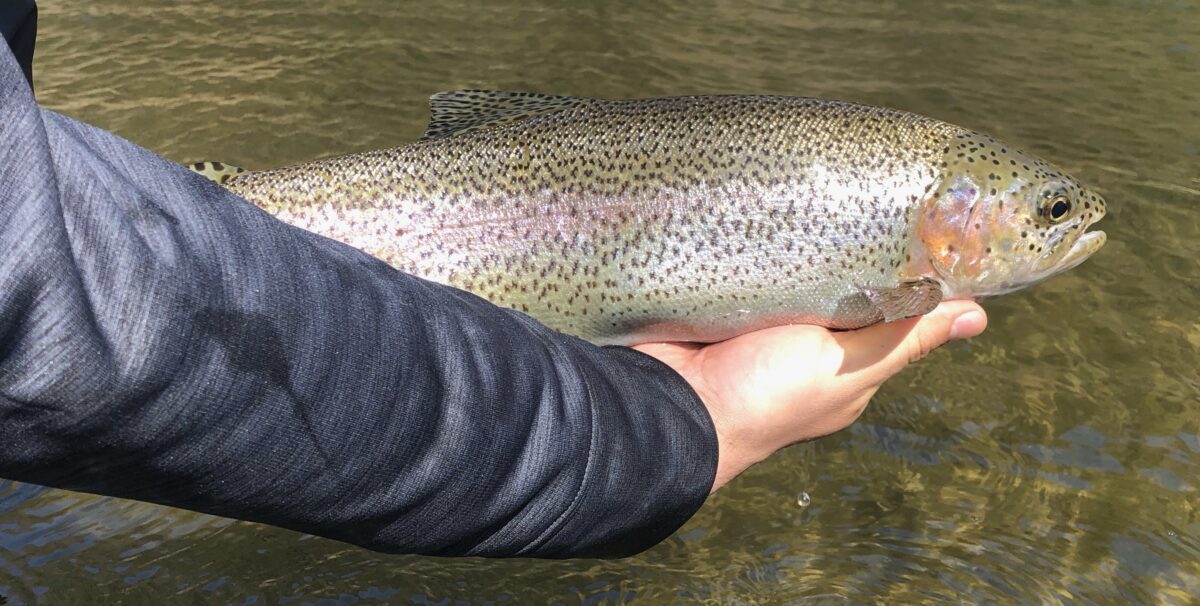
In the late 90’s I built canoes in a shop in the Adirondacks. The finished hulls produced were not immaculate. But they were plenty handsome. Well-designed. Tough and affordable. They are the perfect animal for paddling in the Adirondacks.
In a composite glass and poly lay-up we produced three models.
- The Little Wolf — A 28lb 12 foot solo.
- The St. Regis — A 32lb 14.5 foot solo tripper
- The Saranac — A 56lb 16.5 foot tandem.
Each canoe had custom basswood, ash, or cherry trim.
Fiberglass was the most common material we used in canoe hulls back then. It was cheap — strong enough when layered proper — and easy to work with. Fiberglass cloth came in a variety of weights.
Our business was called Adirondack Canoe Supply and our solo canoes were quite popular. We built at least a hundred of them in about five years time and sold them along with paddles and ash packbaskets.
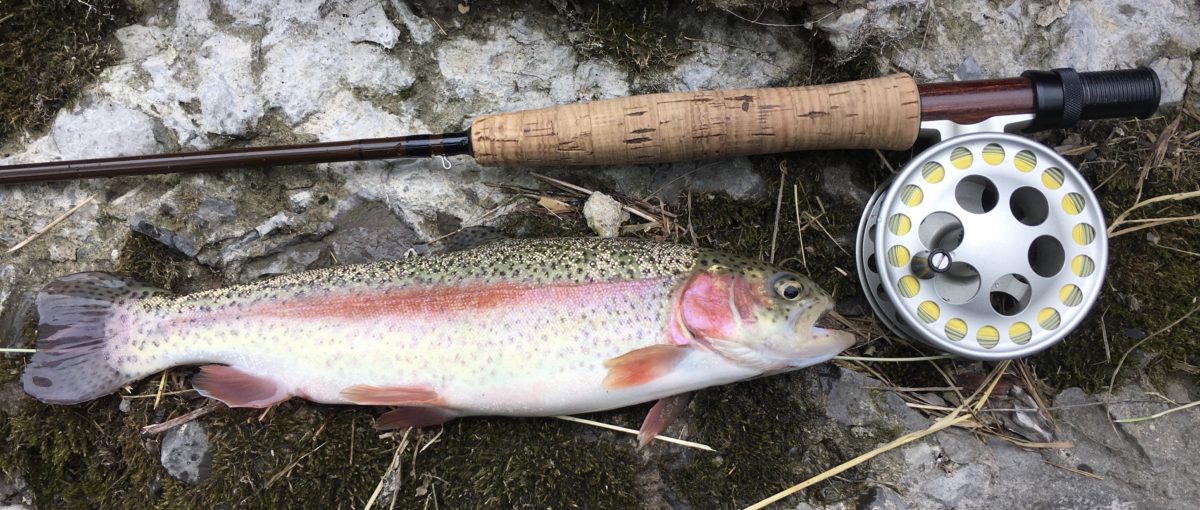
The arrival of kevlar aramid and carbon fiber cloth was a game changer. These new high-tech synthetic cloths were much more expensive and superior to fiberglass. Canoe construction is more difficult and time-consuming with these fabrics, but the canoes they produced were superior to the glass ones in every way. Thus the evolution of the canoe. So similar to that of the fly rod.
We made some money building canoes in that heated shop during the long Adirondack winters. It was a dirty job (epoxy fumes, etc.) but enjoyable. Eventually we stopped production. Things in the world of lightweight canoe construction were changing rapidly. As were things in my twenty-something life. Looking back, I wish I had continued to grow that business.
In todays world of expert-engineered, high-modulus graphite and composite blanks; It is interesting to see fiberglass fly rods being promoted as fine fly fishing instruments. A Bass Pro Shop graphite II fly rod will outperform any fiberglass fly rod I have ever seen and you can buy one for less than $150 dollars.
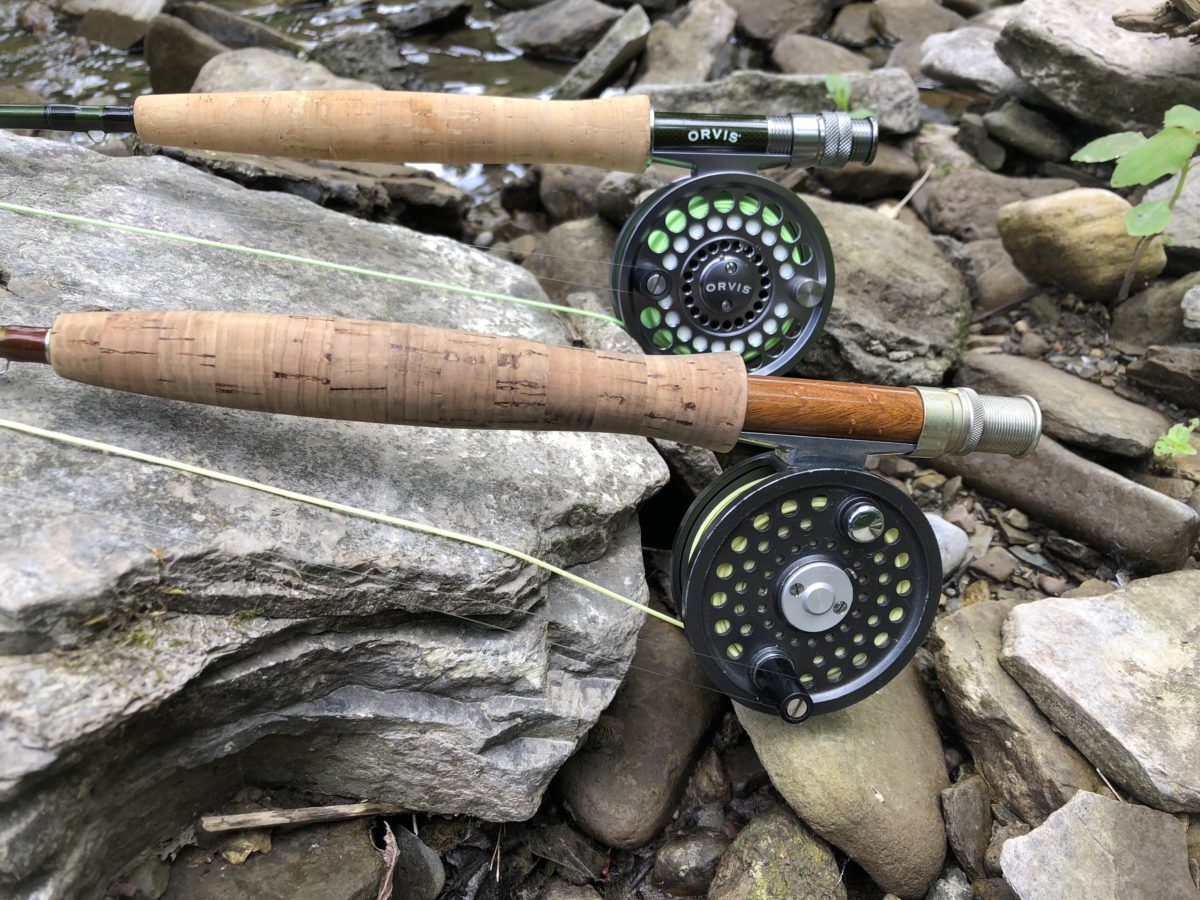
Fiberglass blanks lend themselves well to decoration. Because the blanks are cheap and easier to work with home rod-builders produce and promote them.
Almost all manufactured products related to fishing are subject to the question:
Is this product created to catch fishermen or fish?
In the business of fly fishing (with its new home in social media marketing) the amount of gadgets, paraphernalia, shit-you-don’t-need is astonishing. In volume and variety.
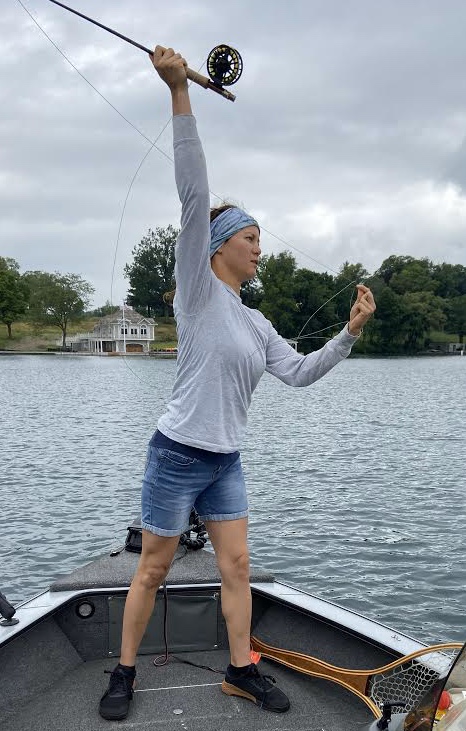
In the evolution of high-modulus modern fly rods fiberglass was lost. Bringing fiberglass rods back is because the blanks are cheap and thread colors stand out strong and eye-catching against the often transparent or translucent fiberglass blanks. Fiberglass fly rod blanks are a great canvass to the artist. And rod builders are, at heart, artists.
Fiberglass canoes, like fiberglass fly rods, died in popularity for the same reasons. The material is heavy, lacks strength, and just does not have the integrity comparable to todays high-tech materials. The end product is, overall, poorly suited for the job it was designed to do.
In the world of professional guiding, sub-par equipment detracts too much from the value of my guests time spent angling. When it comes to canoes and fly rods — Performance is everything. Appearance is nothing. The best tool for the job is always the one to use.

